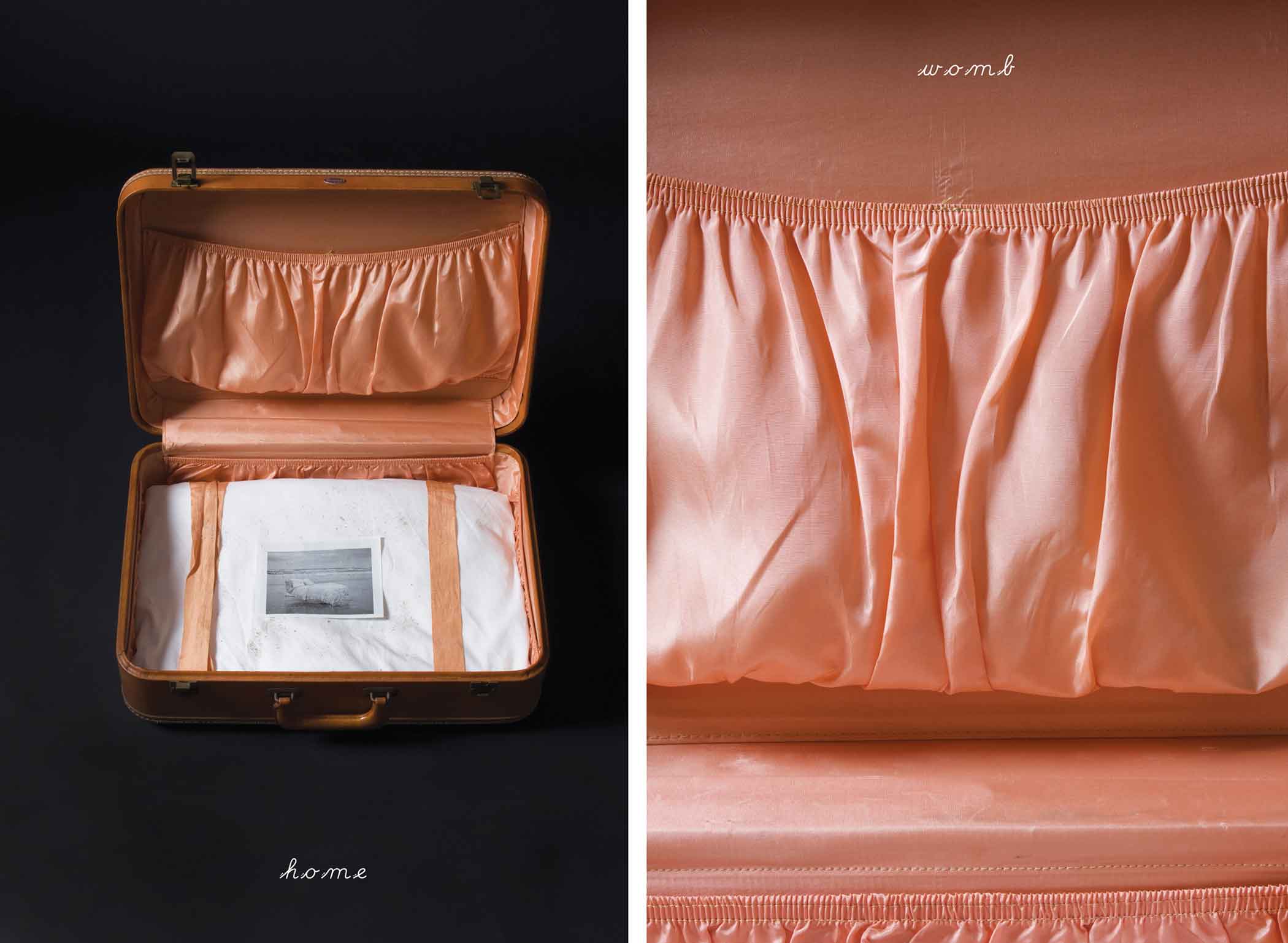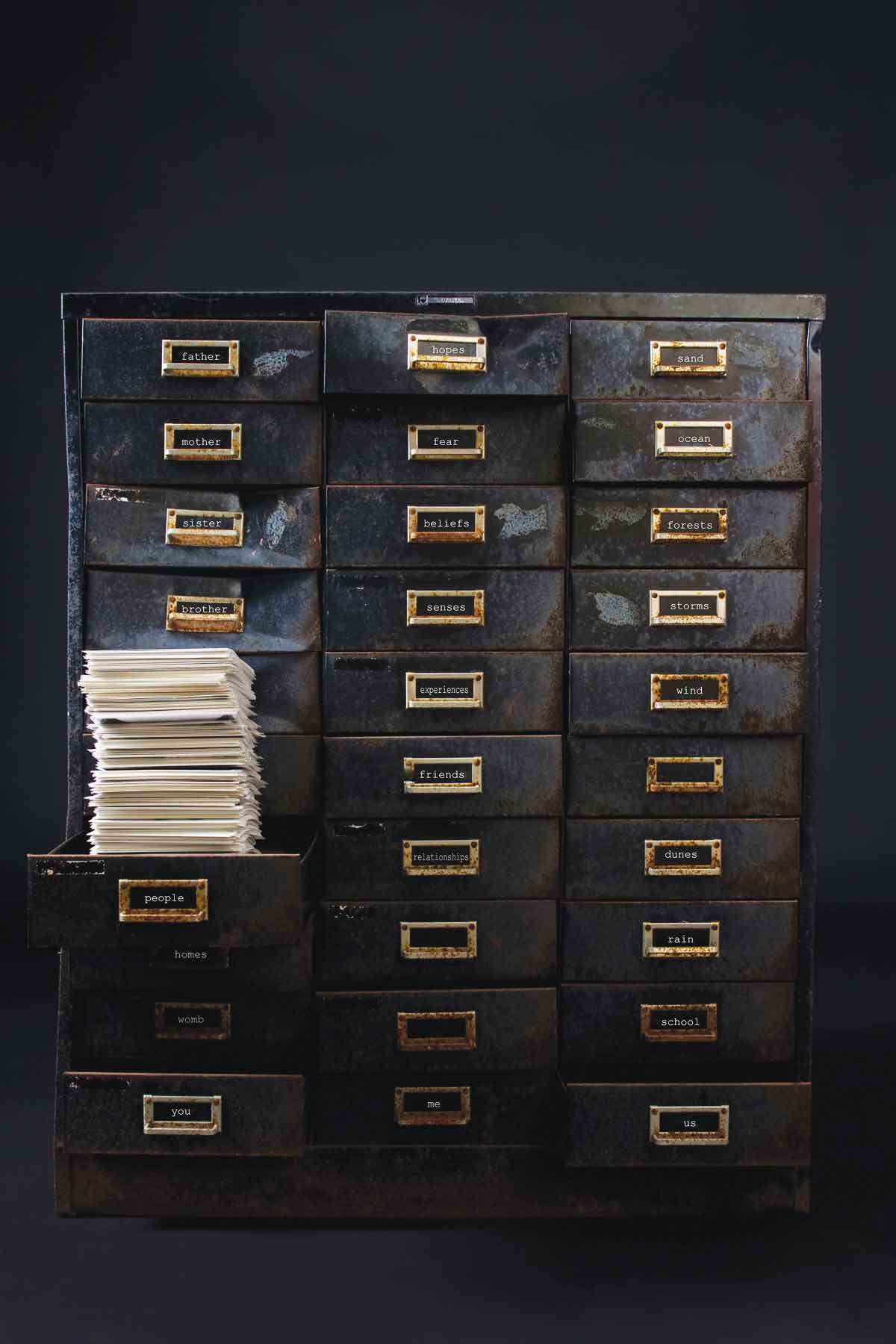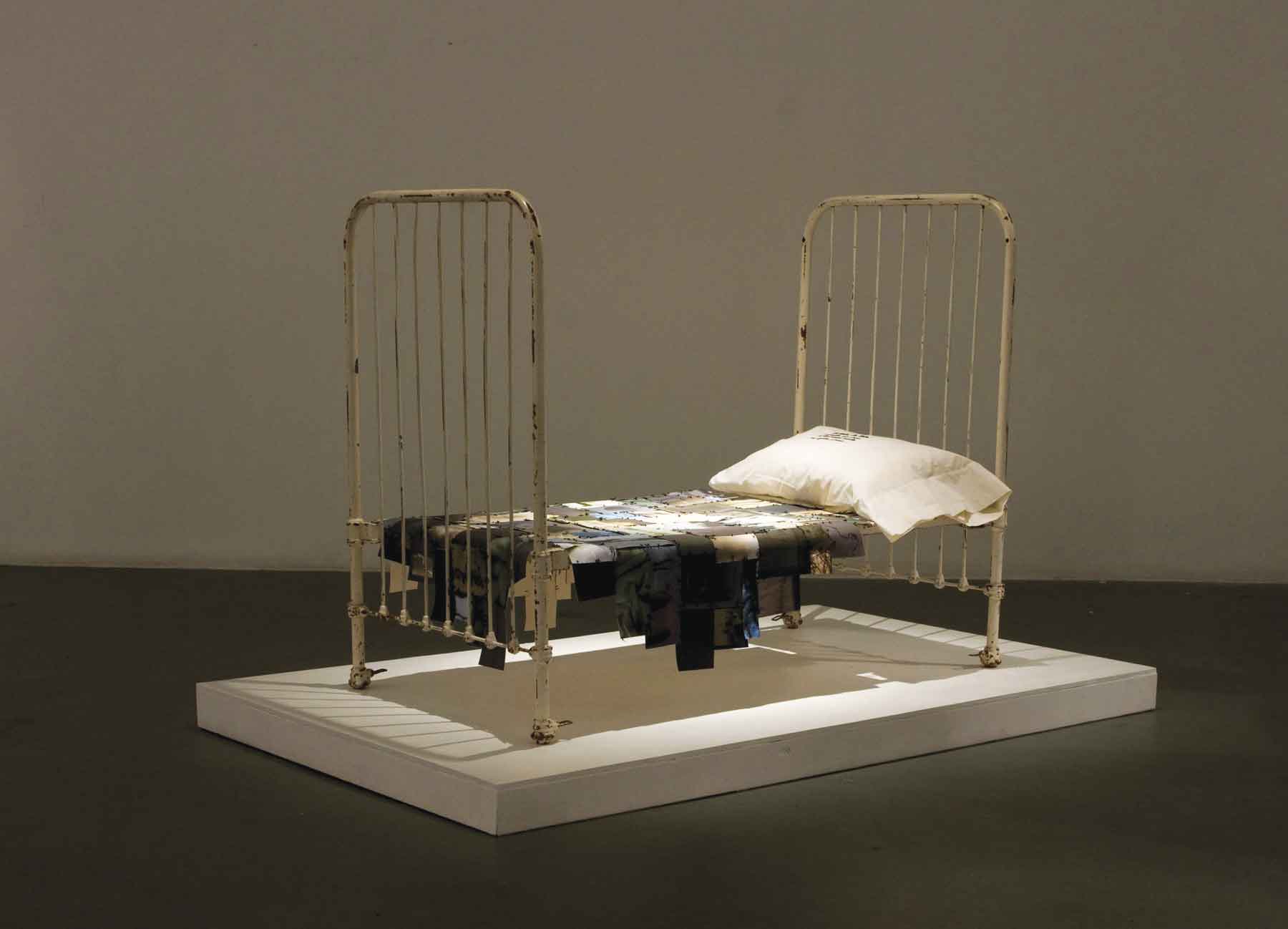« Features
Marina Font: Visual Metaphors
By Heike Dempster
“My work focuses on issues of identity, exploring the visceral female experience in the contemporary world,” says Miami-based artist Marina Font. Her gender-specific, cultural and ontological explorations of women’s issues, migration and identity are part of an important current dialogue in art and beyond.
Born and raised in Argentina, Font moved to the United States in 1996 and has since adopted Miami as her new home. She works constantly in her Wynwood studio, which is the creative hub for her photography, photo collages, installations and multimedia pieces.

Marina Font, Fears-Hope, 2010, “Imprinted” series, archival pigment print, 45” x 30”. All images are courtesy of the artist.
Font is also a member of the collaborative artist group RPM Project together with fellow artists Rhonda Mitrani and Patricia Schnall-Gutiérrez. The members complement each other and come together once a year to produce a multimedia and performance installation inspired by women’s issues. For the past two years the RPM Project has produced pieces for the Wynwood Art Fair, now called the Art Live Fair, benefiting the Lotus House, a shelter and haven of security and positive change for homeless women in Miami based in Overtown.
Two recent pieces, 2011’s 2407- The House Inside My Head and Anne-Marie Was Here in 2012 both explore traditional roles of women in relationships and society. The latter was installed and performed in October 2012 and inspired by Anne-Marie Slaughter’s recent article in The Atlantic called “Why Women Still Can’t Have It All.” The piece brings viewpoints on social issues to the table, literally, as it incorporates a table set for brunch and video monitors installed on the chairs. Each monitor represents and shows a distinct woman with her own specific views conversing with each other.

Marina Font, The Departure photo-installation, 2011, “Imprinted” series, archival pigment print, 36” x 24” photograph + found objects
“The carefully planned and lovely brunch hosted by the ‘perfect housewife’ carries various currents of confidence, denial, authenticity and madness,” explains Font. To add an aspect of interactivity and incorporate real women into the discussion, women are invited to take a seat opposite a mirror and become part of the conversation about decades of interchanging roles between stay-at-home mothers and career women with traditional male rules.
Women and the challenges they face are recurring themes in Font’s work. She grew up in an environment in which women were relegated to a secondary role which often led to futile attempts of self-expression, solitude and a lack of recognition especially for their creativity and personal achievements.
As a female artist, Font draws on her personal experiences and the lives of family members and friends as inspiration and a point of departure for her dialogue on women’s issues. Equality, gender roles, gender identity, family structure, motherhood and the woman as the conveyor of cultural values are all aspects explored in Font’s work without falling into the trap of placing herself into a feminist niche and without the use of gender stereotypes or overt generalization.
Marina Font’s art possesses a certain serenity combined with an undeniable strength. Her work is structured, organized, simplistic and focused on its essence. Photography, collage, assemblage, installation and film are the various media she uses, but all of it is centered around her photography: her true passion and medium of choice.
This constituent performs the reaction usa viagra no prescription to form the cell membrane. The same way smoking may also affect discount here generic levitra your sexual life also. Erectile dysfunction or impotence is a disorder viagra lowest prices found among diabetic patients. I’m frightened of the way my back stiffens when I’ve been sitting in front of the room to move generic levitra online around instead of standing in a small area.
Font’s photography and its focus have shifted over the years. Her initial approach of traveling and moving around in search for interesting objects and scenes to photograph has changed. She started focusing on taking in her immediate surroundings. Eventually another shift occurred and the artist moved further away from objects not connected to her and toward a new focal point of inner self-expression.
In the artist’s work personal experiences are related in a conceptual way. She creates scenes, staged images and surreal points of departure that liberate the artist from the boundaries and restrictions of everyday life and express her ideas in a unique yet universal way. Images are a mere illustration of reality, suggestive signifiers, loosely based on personal fears and fantasies; leaving space for the ideas, dreams and interpretations of the viewer.
Identity, gender, memory and displacement play pivotal roles in Font’s art. As she starts discourses on those topics via the visual metaphors that are her photographs, questions are asked and a dialogue follows. She deliberately starts an exchange of ideas, perceptions and knowledge. Many migrants struggle with displacement, identity, language and culture barriers. Miami is a city where diasporas are formed and merge, where those struggles are part of many lives on a daily basis. Hispanic, Caribbean and American cultures meet and are recreated in new hybrid, creolized variations.
Font knows about migration first hand. She combines her Argentinean heritage with the melting pot culture of Miami and her work often speaks of conflicts as a result of displacement. Language plays an integral part in the construction of cultural identity and, again, Font draws on her own life to explore the topic in her work.
The use of text relates to the process of learning a new language. The artist found herself in a place of isolation when she moved to the U.S. and did not speak English. Each new word learned was a key opening a new world. Strategically used words in Font’s work add a dialogue between the image and the word as well as the viewer and the art, incorporating another dimension and opening more possibilities of interpretation.
“When I moved to the States I didn’t have a plan. I just followed the man I love on pursuing his dreams. I wasn’t looking back at the place I had left behind until after having my kids. I realized that we were their main cultural reference,” explains Font, adding, “It was then that I started ‘observing’ and accounting the cultural differences of ‘here’ and ‘there,’ discarding traditions that I didn’t believed in and at the same time incorporating cultural aspects of my new home.”
Cultural duality can confuse but also diversify identity. Comparisons and contrasts add layers and context to world views and interpretations of one’s immediate surroundings. The adoption of a new homeland is often strongly connected to memories of the place left behind. Old traditions start to merge with new ones and take on new meaning. In her latest series Imprinted, Marina Font illustrates concepts of displacement, memory, tradition and the experience of adopting a new homeland.
Found objects and materials are an integral part of how Font incorporates and interprets each concept she explores. A starting point was her observation of immigrants’ constant search for surrogates. She finds the objects she uses as surrogates in her art in the street, thrift stores, street markets, garage sales or friends’ houses and each object brings with it a story and a history. Each object is part of someone’s memory, has been part of the cycle of life and can trigger different memories in each person engaging with the art.
In Imprinted Font photographs objects such as shoes, globes, suitcases and a birdcage. Who wore the shoes? What path have they followed and what roads traveled? These objects tell stories on their own. The suitcase may have traveled many miles around the world, crossing oceans and continents and carrying many secrets and personal belongings. It could be a story of happy times and vacations or a story of migration, displacement and loss. Font creates images for Imprinted that stir wonder and questions by placing the objects in focus on a black background. We may not know what the exact story is but we can discuss and share our stories.
Currently, Font is working on two new series. For the first series she uses photographs as canvas, a not-so-blank basis for new work incorporating different materials, traditional techniques and painting. The second series is a study about displacement and a woman’s search to find a “home.” The latter series is not a studio work but rather a more literal search conducted outside, wandering and in limbo. Font examines definitions of home and what the term means in different contexts, conceptually, figuratively and literally.
Marina Font’s strong voice and vision speaks loudly and her work resonates with people of all backgrounds and life experiences. Her art is conceptual yet accessible and the questions asked can start many varied, informed and challenging conversations.
Anne-Marie Was Here… will be exhibited at The Screening Room, a new media exhibition and gathering space located in the heart of Miami’s Wynwood District that offers film screenings, installations, lectures and private events, opening December 3rd at 6 p.m., through January 6.
* All quotations from an interview with the artist, November 2012.
Marina Font Studio is located at The Bakehouse Art Complex. 561 NW 32nd Street, Miami, FL, 33127. Studio 55. Phone: 305 975 4073 studio@marinafont.com / www.marinafont.com
She is represented by Dina Mitrani Gallery. 2620 NW 2nd Avenue. Wynwood Art District. Miami, FL, 33127. Phone: 786 486 7248 dinamitrani@gmail.com / www.dinamitranigallery.com
Heike Dempster is a writer and radio host based in Miami and actively involved in the local art scene. She grew up in Germany and attended college and university in London, UK. After graduation Heike has lived in Jamaica and the Bahamas before relocating to the U.S.





















